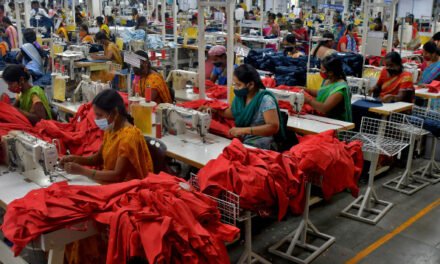 The recession in the textile industry continued in the first quarter of the financial year 2023-24, with India’s textile exports dropping by 15.26% to $8.4 billion. Industry experts attribute the decline to weak demand and high prices of cotton.
The recession in the textile industry continued in the first quarter of the financial year 2023-24, with India’s textile exports dropping by 15.26% to $8.4 billion. Industry experts attribute the decline to weak demand and high prices of cotton.
The entire textile value chain of ginning, spinning, weaving, processing and garment making has been affected by weak global demand. Exports of cotton yarn and fabrics, man-made yarn and fabrics, carpets, handicrafts and apparel shrank from April to June, according to data from the Confederation of Indian Textile Industry (CITI).
The textile industry has been going through a tough time for more than a year because of volatile cotton prices and weak global demand, especially since the Russia-Ukraine war began.
Rahul Shah, a member of the administration committee of Texprocil, said, “The entire textile value chain is under pressure and spinning, weaving and processing are struggling. Demand in the international and domestic markets has been low and this is seen in exports data as well. Last year, from April to June, textiles and apparel exports were worth $9.9 billion, which has decreased by about 15% to $8.4 billion this year.
Ripple Patel, vice-president of Spinners Association Gujarat (SAG), said, “The spinning sector is struggling because international demand is low and the price of Indian yarn is about Rs 235 a kg (30 comb variety) which is still 2% higher than international prices, so we are not competitive.
Currently, spinning mills are running at about 90% capacity to fulfill orders they got a month ago. However, there have been no new orders for about a week now.
Industry experts say textile exports make up about 10% of the country’s merchandise exports Textiles and apparel make up about 40% of total text es exports, while home textiles and fabrics account for 18% and 13%, respectively.





















